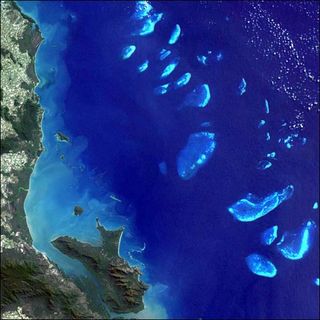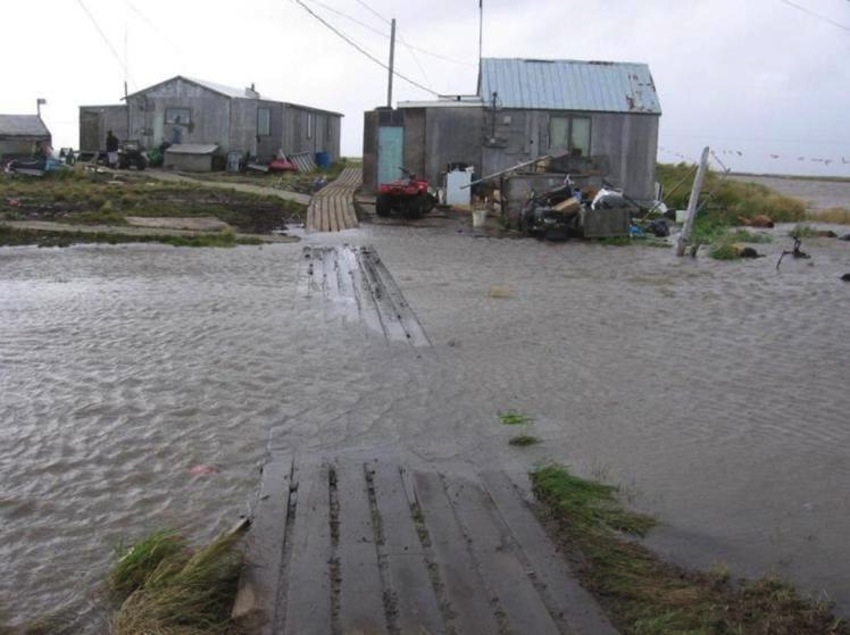Potential Effects of Climate Change on Soil Properties a Review
5 Places Already Feeling the Furnishings of Climate change

The effects of a warming planet are likely to be vast and varied — ranging from increased droughts and littoral flooding to reductions in snow and water ice. Simply while most climate predictions look ahead to the potential risks 50 or 100 years from now, there are places effectually the globe that are already being impacted by global warming.
Here are five places where climate alter is already striking close to home:
Smashing Barrier Reef
Satellite measurements have demonstrated that the waters of Commonwealth of australia'south Dandy Barrier Reef take warmed by 0.36 degrees Fahrenheit (0.2 degrees Celsius) on average over the past 25 years. This warming has led to a decline in the amount of seafloor covered in thriving coral.
A 2012 study published in the journal Proceedings of the National Academy of Sciences found that half of the Great Barrier Reef was lost in the past 27 years.
Warming oceans, linked to rising emissions of carbon dioxide, increase the risk of coral bleaching — a phenomenon that disrupts the symbiotic human relationship betwixt corals and the organisms that alive within their tissues and provide food the corals need to survive.
Higher-than-normal ocean temperatures cause corals to expel the tiny animals and algae that alive within them. This turns the corals white and places the reef-building animals — and the entire ecosystem — under stress.
Newtok, Alaska
Newtok, and many other villages in Alaska, are built atop permanently frozen soil, called permafrost. As sea temperatures increase, Alaska's permafrost melts, causing the ground to erode and many of these remote, coastal towns to sink.
Newtok is located on the western coast of Alaska, on the edge of the rising Ninglick River. The flood-prone town already sits beneath sea level, and researchers accept said the entire village could exist underwater within a decade. [What 11 Billion People Hateful for Climate change]
Now, members of the customs are hoping to relocate Newtok's 350 residents to higher basis, at a site roughly 9 miles (14 kilometers) away. But there are financial and political barriers. For instance, the U.S. Government Accountability Office estimates that moving the town of Newtok could cost up to $130 million.

Mumbai, India
The Indian metropolis of Bombay is 1 of the places at risk of dangerous and plush floods due to climate change, according to a report released earlier this yr past the Globe Banking concern. Economists at the Earth Bank examined 136 big coastal cities, and evaluated their coastal defenses and level of protection.
The written report identified Mumbai as 1 of the littoral cities that face a high run a risk of devastating floods due to global warming. Researchers establish the urban center's existing defenses against flooding and storm surges are just designed to withstand current conditions, not for the anticipated rise in sea levels that will brand future floods more devastating.
While coastal defenses are a start, "if they are not upgraded regularly and proactively every bit gamble increases with climate change and subsidence, defenses can magnify — not reduce — the vulnerability of some cities," written report leader Stephane Hallegatte, an economist at the World Bank, said in a statement.
The Alps
The Alps, one of the most famous mountain ranges in Europe, take long been a tourism hotspot, famous for their top-notch ski resorts and as a popular year-round destination for outdoors enthusiasts. But climatologists warn that global warming could spell trouble for the sprawling alpine region.
Since the late 19th century, temperatures in the Alps take been steadily ascension, from an average yearly temperature of 49.3 degrees F (9.6 degrees C) in the late 1800s to today'south boilerplate of 51.4 degrees F (x.eight degrees C), co-ordinate to Gilles Brunot, a meteorologist based at the ski resort Chamonix-Mont-Blanc in southeastern French republic.
But concerns about global warming's effect on the Alps extend beyond the region's ski manufacture. Near 40 percent of Europe'southward freshwater originates from the Alps, which stretch from Austria in the East to French republic in the Due west, dipping into parts of Italy and Monaco in the S. Climatic change is threatening the expanse's water cycle, which includes patterns of atmospheric precipitation, snow and glacier cover. [8 Means Global Warming is Already Irresolute the World]
Gansu Province, China
Farmers beyond China's Gansu Province, 1 of the state'southward driest regions, are already struggling to cope with the effects of climatic change, as droughts and arid land contribute to the region's vast poverty. The United nations says warming temperatures are shrinking glaciers in central Asia and the Himalayas, which typically furnish Cathay's rivers.
China recently completed its first National Census of Water, and found that as many every bit 28,000 of the country's rivers have disappeared since the 1990s. The study did not identify reasons for the loss of the rivers, but the research showed an alarming trend of dwindling water resources throughout the country.
China currently has 2,100 cubic meters (74,000 cubic feet) of water resources per person — roughly 28 percentage of the global average, according to Reuters. But as the country'southward population grows, these supplies could dry out up sooner than expected.
Follow Denise Chow on Twitter @denisechow . Follow LiveScience @livescience , Facebook & Google+ . Original commodity on LiveScience.
Source: https://www.livescience.com/41380-climate-change-places-at-risk.html
